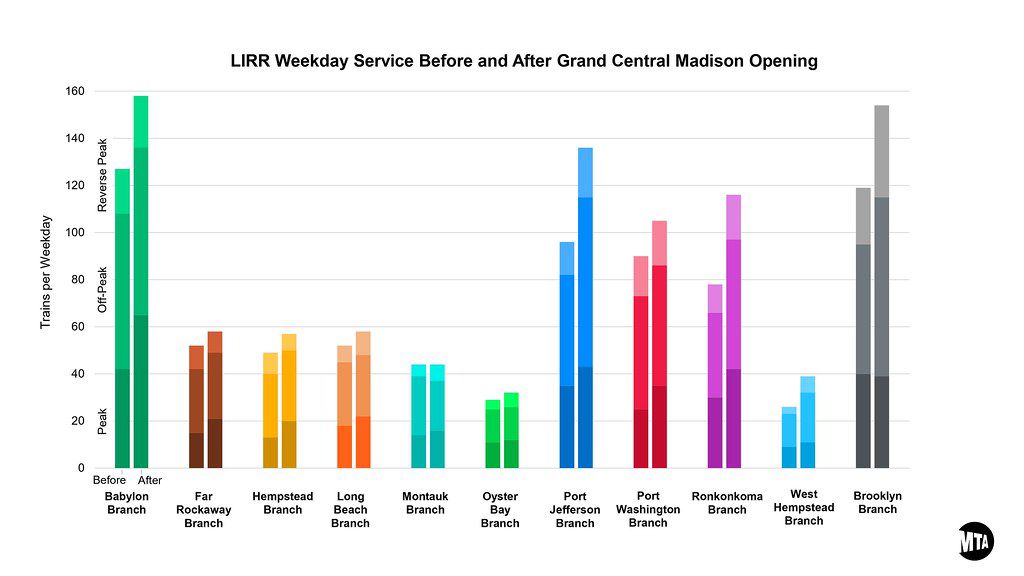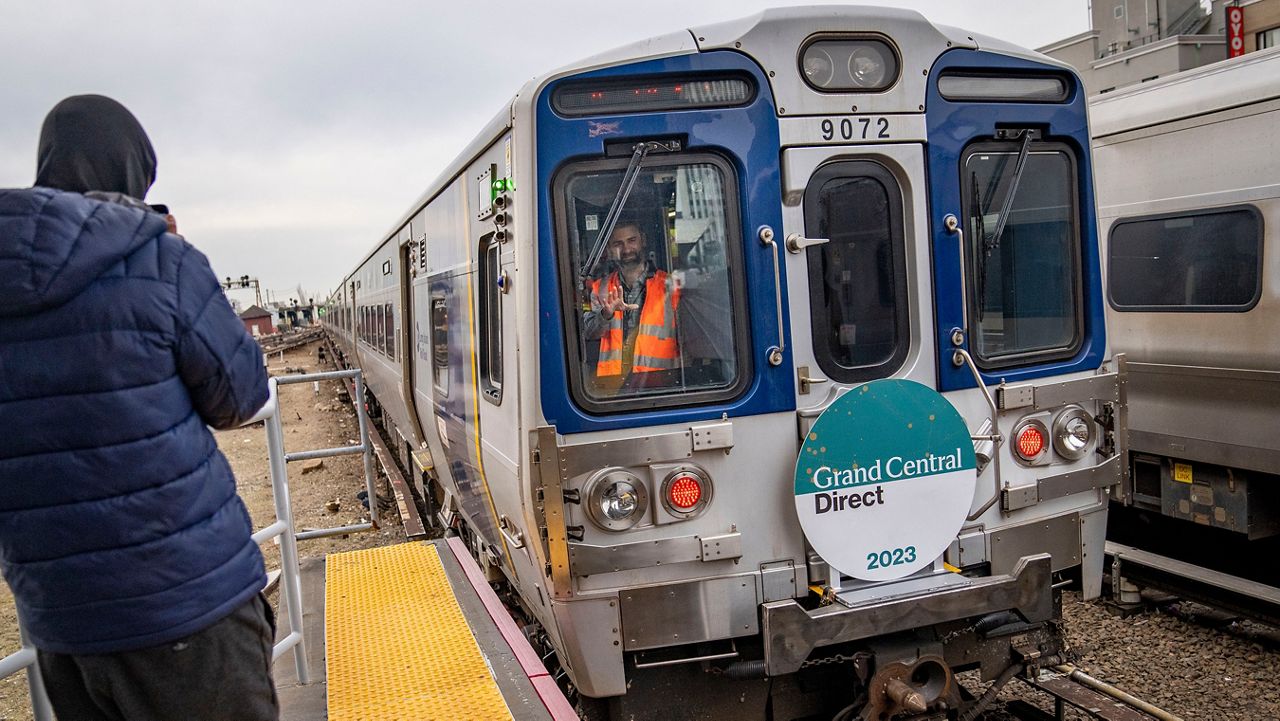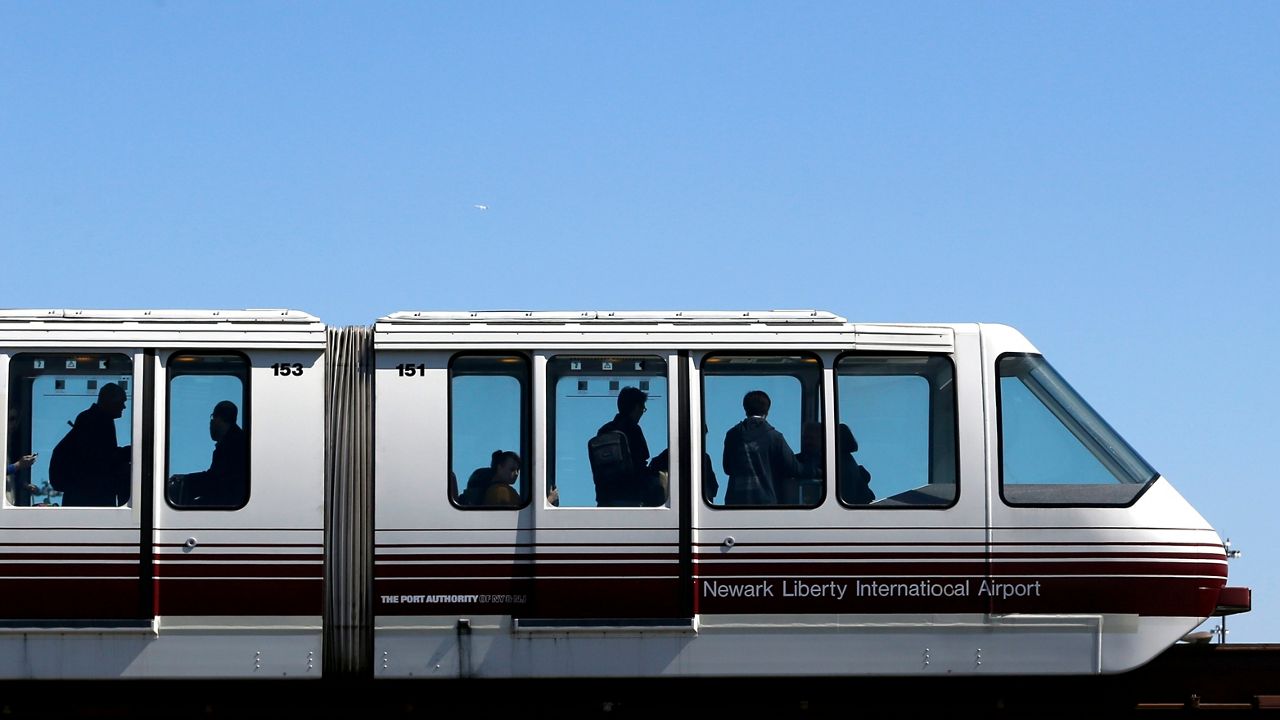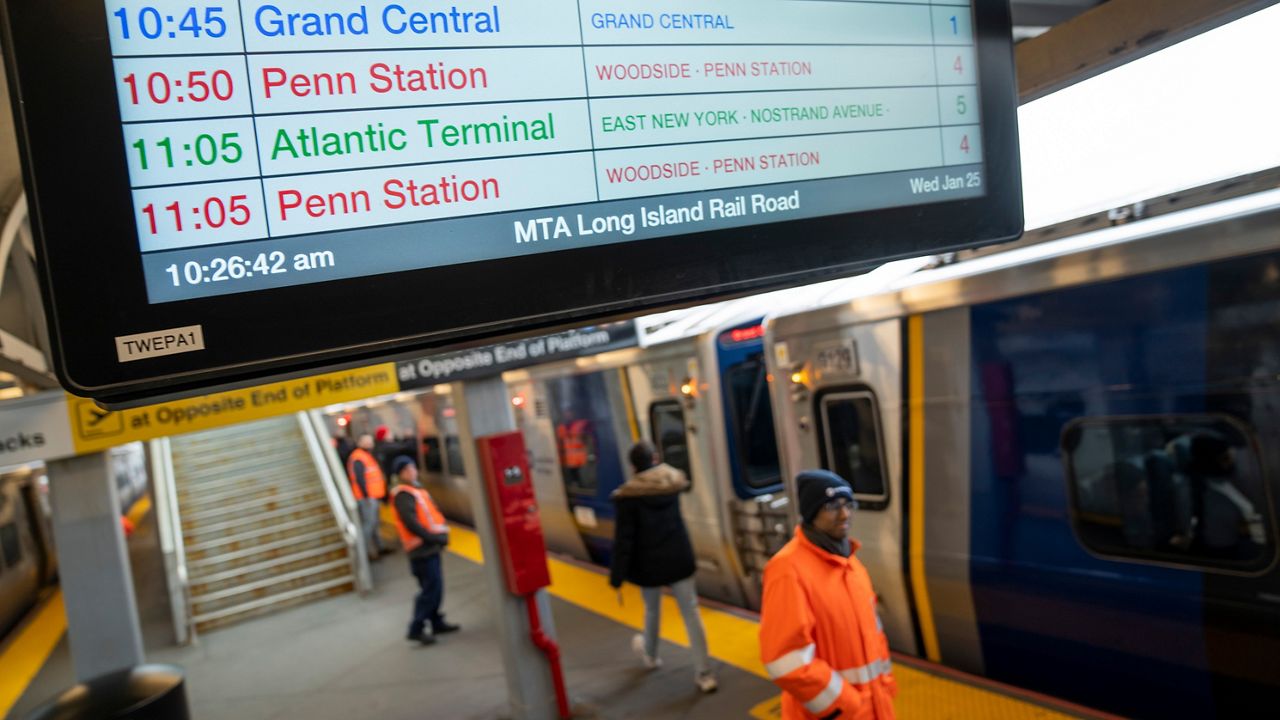Full Long Island Rail Road service to Grand Central Madison began on Monday, which brought schedule changes to a majority of riders.
The LIRR has added 271 trains per day, a 41% increase in service and the largest such change in the railroad's history, MTA chief executive Janno Lieber said.
"Faster, more convenient travel that brings Long Island closer to the heart of the city — the new schedules are going to be a major shot in the arm for the local economy and the effort to get people back to offices, theaters and shopping," Lieber said in a press release.
However, many riders expressed frustration with the new schedule on Monday, citing fewer trains to and from Penn Station, less cars per train, longer wait times for transfers at Jamacia station and slashed service between the suburbs and Brooklyn.
The MTA says 296 trains now serve Grand Central per day, and 936 LIRR trains run per day across the system — up from 665.
But Manhattan-bound trains are now split between Penn Station and Grand Central, according to the MTA.
Additionally, the MTA says that service between Jamaica and Atlantic Terminal now runs as a shuttle between those two points. All of these trains stop at Nostrand Avenue and East New York.
Prior to Monday's changes, trains on the Far Rockaway, Hempstead and West Hempstead branches regularly terminated at Atlantic Terminal. Now, almost all customers coming from the suburbs have to transfer at Jamaica to get to Brooklyn.
Starting Monday, the MTA also eliminated scheduled connections at Jamaica station. Trains now leave at their scheduled time and do not wait for other arriving trains. The MTA says this will speed up trips for most people who are not getting off at Jamaica, but riders on Monday complained of longer wait times and large crowds.
In other news, Elmont-UBS Arena is now a full-time station, with all Huntington and Ronkonkoma trains stopping during normal game times even when there is not an event at UBS Arena, according to the MTA. There is now service every 30 minutes to and from UBS Arena both before and after games.
The MTA has also added trains to Forest Hills departing from both city terminals, so customers from the northern suburbs have increased opportunities to take trains to events at Forest Hills Stadium.
As previously stated, many customers are not happy with the new schedule changes.
Riders on the Oyster Bay branch launched an online petition with over 1,600 signatures as of Monday night, claiming they now have longer commutes, fewer travel options and more time between trains. The petition calls for an additional rush hour train and a new express train on the line.
Many riders on other branches who go to and from Penn Station now have fewer trains to choose from due to the new trains being diverted to Grand Central.
The Grand Central Madison station finally opened in January after decades of planning and construction. The MTA planned to open the station before the end of last year, but an unexpected issue with its emergency smoke ventilation system further delayed its grand opening.
The station officially opened last month, but was only serving as a shuttle service to and from Jamaica. It opened fully on Monday.
Federal funds for the project were first secured in the 1990s, and politicians and officials expected construction to be completed within a few years. Construction eventually started in 2010, and its initial price tag of $4.4 billion increased to more than $11 billion.
More information about how each LIRR branch is affected by the new schedule is below. All information comes directly from the MTA.
Babylon Branch
- Overall service will increase to 155 trains a day, a 24% increase
- Peak service will increase by 53% and weekend service will increase by 28%
- Trains will generally stop at Wantagh, enabling transfers at the station
Far Rockaway Branch
- Overall service will increase to 60 trains a day
- Off-peak trains will run every hour between Far Rockaway and Manhattan
- All trains will stop at Jamaica for service to Brooklyn
Hempstead Branch
- Overall service will increase to 57 trains a day
- Eighteen trains will run to and from Manhattan during peak hours
- All trains will stop at Jamaica for service to Brooklyn
Long Beach Branch
- Overall rush hour service will increase to 23 trains a day
- Reverse peak service will increase to 10 trains a day
- All trains will stop at Jamaica for service to Brooklyn
Montauk Branch
- Two direct trains between Speonk and Penn Station will continue during each rush hour
- Additional Hicksville and Mineola stops will be added
- Additional service to and from Montauk will run between Memorial Day and Labor Day
Oyster Bay Branch
- Overall service will increase to 32 trains a day, a 10% increase
- Two direct trains between Oyster Bay and Penn Station will continue during rush hour
- Off-peak weekday service will run every one to two hours during the day
Port Jefferson Branch
- Thirty-eight trains will be added per weekday, a 39% increase
- Seven peak trains will be added per weekday, a 19% increase
- Weekday peak service has been increased by 51% at Mineola and 43% at Hicksville
Port Washington Branch
- Overall service will increase to 103 trains a day, a 14% increase
- More express trains will be serving Bayside, Douglaston, and Little Neck
- Off-peak and weekend travelers can catch trains every 30 minutes between Manhattan and Port Washington
Ronkonkoma Branch
- Overall service will increase to 117 trains a day, a 50% increase
- Rush hour service will increase to 42 trains a day, a 40% increase
- Additional trains will run during the summer
West Hempstead Branch
- Overall service will increase to 39 trains a day, a 50% increase
- Off-peak trains will run every hour between West Hempstead and Atlantic Terminal
- All trains will stop at St. Albans







